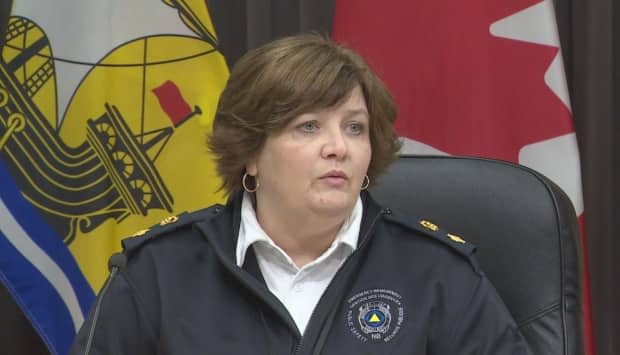Province caps disaster relief, expands buyout eligibility for flood-damaged homes

New Brunswick is making changes to disaster financial assistance when it comes to payouts and buyouts.
Public Safety Minister Kris Austin said that from 2014 to 2020, disaster assistance payouts in New Brunswick totalled around $335 million. The province is responsible for $76 million of that figure, the rest is covered by the federal government, he said.
Speaking at a news conference this week, Austin said changes needed to be made because the government "cannot afford to continue with business as usual" as the frequency and intensity of weather events continues to increase.
"We are also balancing the help for residents that are affected by these disasters along with protecting the taxpayer to ensure that that balance is met and people get the help that they need," said Austin.

The changes to the program include increasing the maximum payout for structural damage and putting a cap on the amount of assistance a property owner can claim for the same type of disaster.
The province is also expanding the eligibility for a buyout — where the government buys the damaged property from the owner because of flood damage.
Lisa Munn, recovery operations manager for the New Brunswick Emergency Measures Organization, said the structural damage payout limit is being raised from $160,000 to $200,000, which she says is based on the value of a "modest, three-bedroom bungalow."
Before now, the maximum payout was $160,000, but property owners could make claims multiple times if damage was sustained year after year from the same type of disaster.
Now, the maximum payout limit is higher, but it will be capped, so after that amount is awarded, property owners will not be able to receive anymore assistance for the same type of disaster.

For example, Munn said if a property is damaged three times by overland flooding, and they put in three claims each at $60,000, $60,000 and $80,000, that property would no longer be eligible for disaster financial assistance for future claims.
Eligibility for buyouts after a disaster will also be lowered, said Munn. Previously, a home would have had to sustain damage assessed at 80 per cent of the property's fair market value to be offered a buyout.
But now, the threshold has changed to be 50 per cent arising from a single event or 80 per cent for cumulative claims across multiple disasters, said Munn.
For example, a home worth $200,000 would now be offered a buyout if $100,000 in damages were sustained.
If a person takes a buyout for their flood-damaged property, the building is levelled and the property becomes Crown land.

If the person does not take the buyout and instead opts for disaster financial assistance, they can make claims up to $200,000.
If they accept a buyout after already receiving disaster financial assistance previously, their buyout will be awarded based on what is left before hitting the cap, said Austin.
"By capping the $200,000, we are saying to residents, 'Look, you had the option to take that buyout and to get to a safer location. Because if you choose to stay there, which is your choice, we will help you. But we will only help you up to $200,000.'"
Austin said expanding the buyout eligibility is a need that he noticed as MLA for Fredericton-Grand Lake.

He said it is an area that has been severely affected by flooding in the past.
Austin said he spent a lot of time going door-to-door and meeting with people affected by flood damage.
"I sensed the frustration, I felt it," said Austin. "Many of these folks … wanted a buyout, they wanted to leave their property, they wanted to move on. But unfortunately, the [disaster financial assistance] in its previous form did not give them the opportunity to do so."
He said the changes made will "make it easier for people to get out of harm's way."


